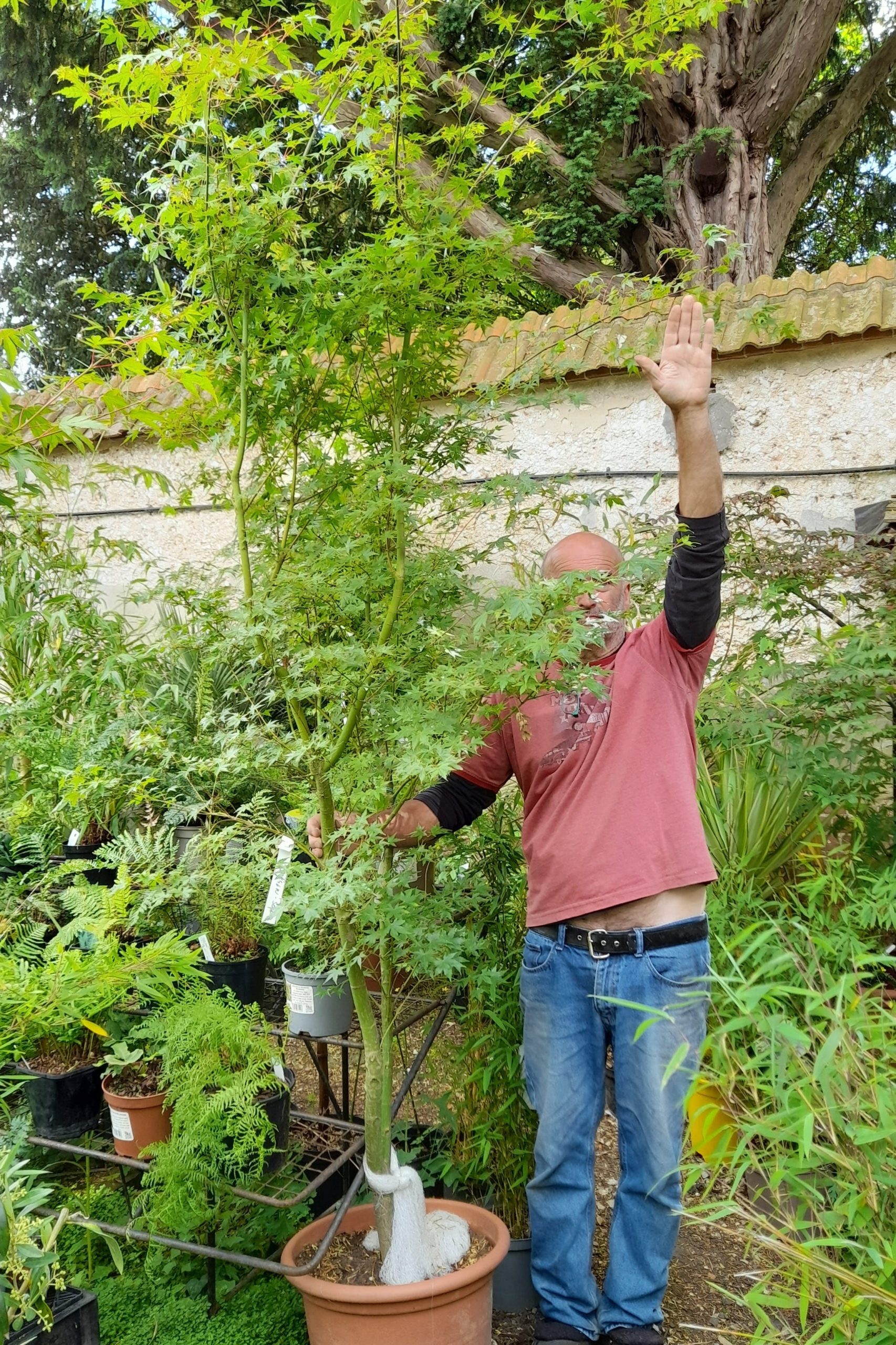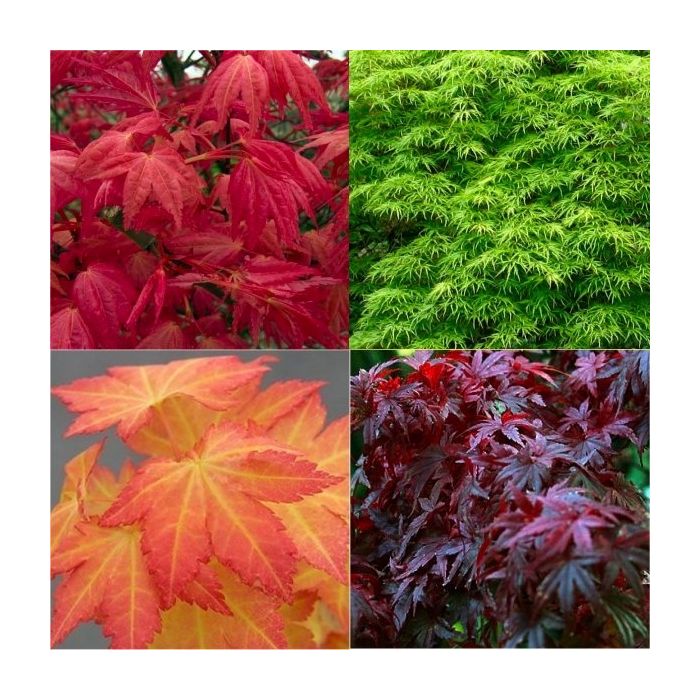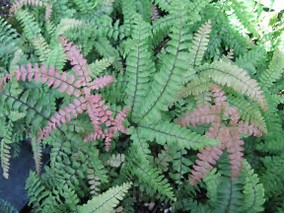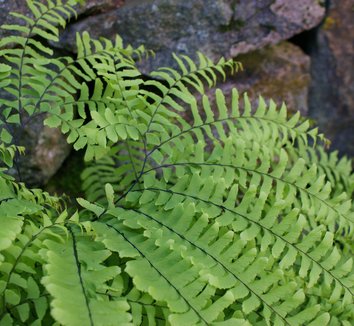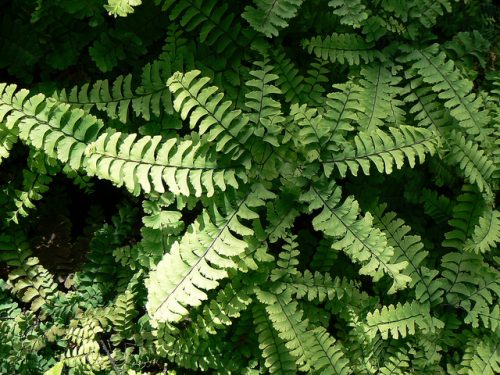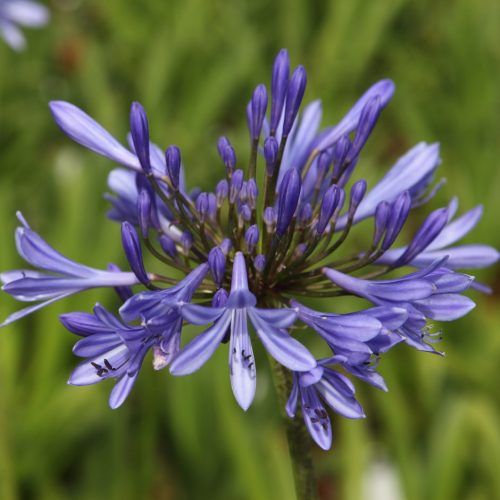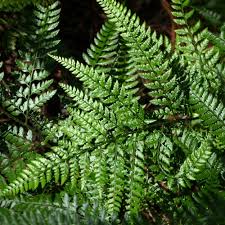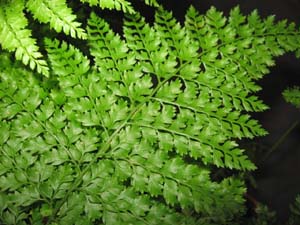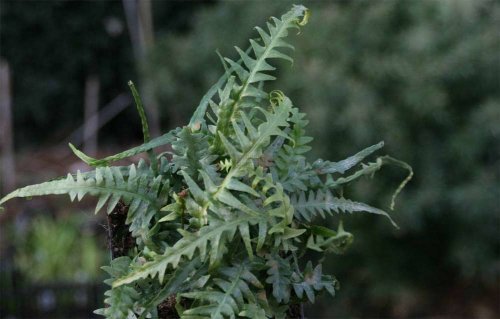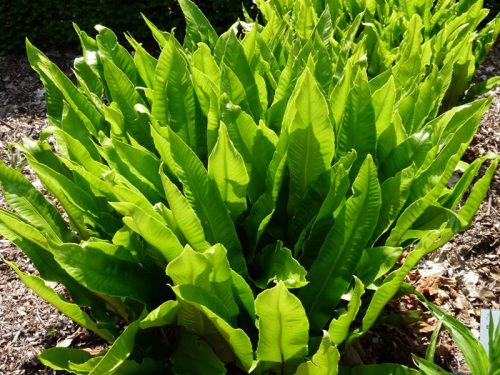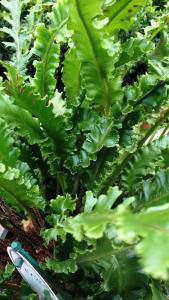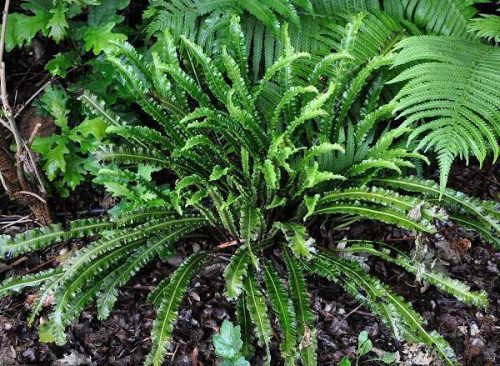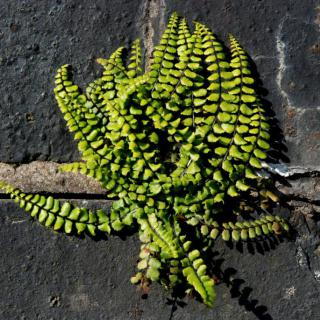-
 Adiantum aleuticum is very similar to A. pedatum but noticeably different when compared together. Adiantum aleuticum is native to the western half of North America and East Asia. It is a very hardy fern, and, despite its delicate appearance, very tough. 'Imbricatum' is a dwarf selection with green to blue-green foliage and purple wiry rachis. This variety forms a dense clump and is very easy to establish in good humus-rich, moist soil in shade.
Adiantum aleuticum is very similar to A. pedatum but noticeably different when compared together. Adiantum aleuticum is native to the western half of North America and East Asia. It is a very hardy fern, and, despite its delicate appearance, very tough. 'Imbricatum' is a dwarf selection with green to blue-green foliage and purple wiry rachis. This variety forms a dense clump and is very easy to establish in good humus-rich, moist soil in shade. -
Out of stock
 Adiantum can be deciduous or evergreen ferns with shiny black stalks bearing simple or more usually pinnately divided fronds, the segments fan-shaped, oblong or rounded, carrying spores under reflexed marginal flaps
Adiantum can be deciduous or evergreen ferns with shiny black stalks bearing simple or more usually pinnately divided fronds, the segments fan-shaped, oblong or rounded, carrying spores under reflexed marginal flaps -

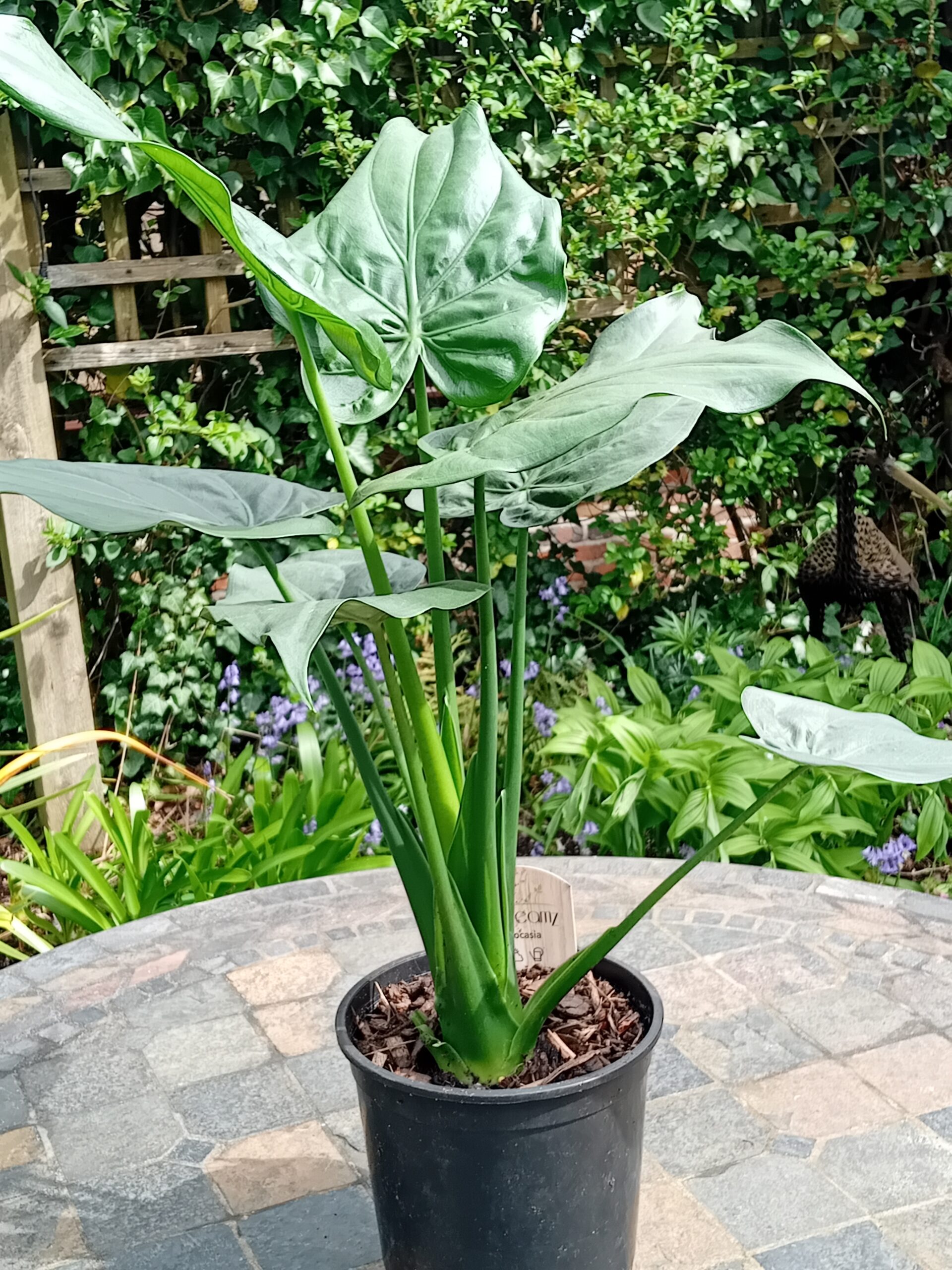 These alocasias have dark green, arrow leaves and are significantly easier to look after than some of their family. Their thick woody trunks enable them to store water for longer periods of time, making them fairly drought tolerant. Likes light areas but not in direct sunlight. Water regularly but not too much, let the top soil dry out before watering, they do not like to be overwatered.
These alocasias have dark green, arrow leaves and are significantly easier to look after than some of their family. Their thick woody trunks enable them to store water for longer periods of time, making them fairly drought tolerant. Likes light areas but not in direct sunlight. Water regularly but not too much, let the top soil dry out before watering, they do not like to be overwatered. -
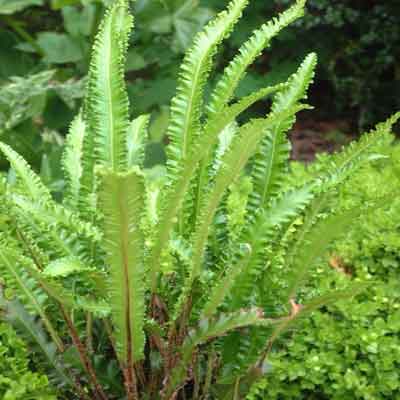 The Narrow Hart's Tongue fern differs from the plain species, unsurprisingly, by having narrower leaves but also with an undulating margin giving an extremely attractive rippling effect to the plant as a whole. It is also a touch smaller than the species when mature, tolerant and a must for fern collectors.
The Narrow Hart's Tongue fern differs from the plain species, unsurprisingly, by having narrower leaves but also with an undulating margin giving an extremely attractive rippling effect to the plant as a whole. It is also a touch smaller than the species when mature, tolerant and a must for fern collectors.

